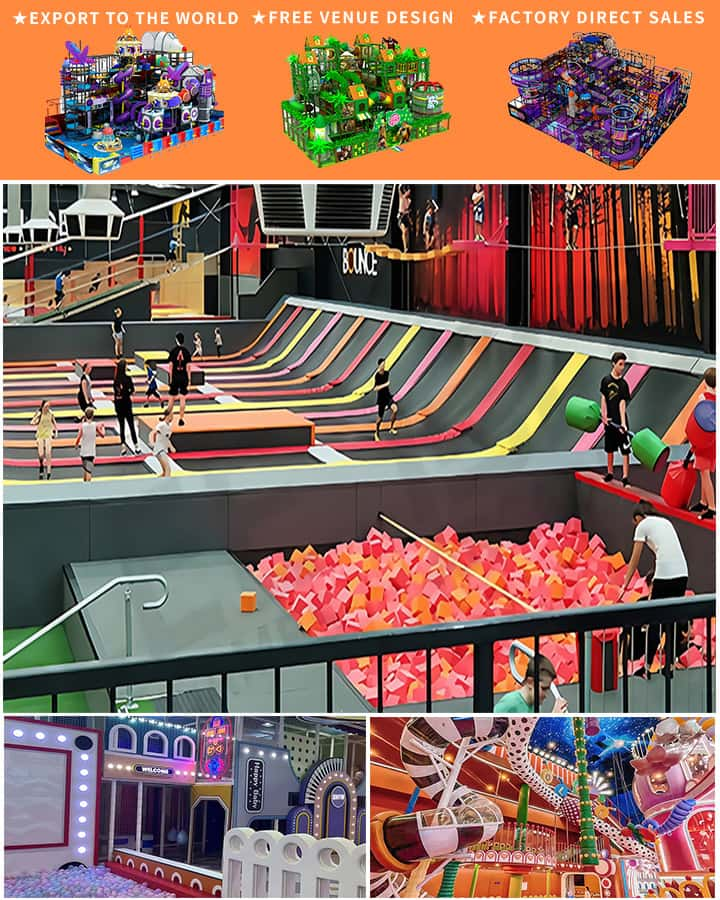In recent years, the importance of creating inclusive environments for children with autism has gained significant recognition. One area that stands out as particularly beneficial is the development of indoor playgrounds designed specifically to cater to the unique needs and sensory considerations of children with autism. These specialized play areas aim to provide a safe, supportive, and stimulating environment where kids with autism can engage, learn, and grow alongside their peers. This article explores the various facets of designing an indoor playground that is both accommodating and enriching for children with autism.
Understanding the Needs
Children with autism often experience the world differently compared to their neurotypical peers. Many may have heightened sensitivities to sensory input, such as lights, sounds, and textures. They might also struggle with social interactions and benefit from more structured environments. Recognizing these needs is the first step towards creating an inclusive indoor playground.
Designing a Sensory-Friendly Environment
Calming Colors and Lighting
The choice of colors and lighting plays a crucial role in creating a sensory-friendly space. Soft, muted tones can help reduce visual overstimulation, while dimmable lighting allows for adjustments based on individual sensory needs. Avoiding harsh fluorescent lights and incorporating natural light sources where possible can make the environment more soothing.
Noise Control
Managing auditory stimuli is equally important. Incorporating sound-absorbing materials such as acoustic panels can minimize echoes and background noise, creating a quieter atmosphere. Quiet zones with comfortable seating and soft music can offer children a retreat when they need to relax.
Textures and Materials
 Providing a variety of textures in the play equipment can be both stimulating and calming. Surface materials should be chosen carefully to balance tactile interest with safety. Soft, cushioned flooring and wall coverings can prevent injury while offering varied sensory experiences.
Providing a variety of textures in the play equipment can be both stimulating and calming. Surface materials should be chosen carefully to balance tactile interest with safety. Soft, cushioned flooring and wall coverings can prevent injury while offering varied sensory experiences.
Structuring the Space
Defined Areas
Organizing the playground into distinct zones can help create a sense of order and predictability, which is comforting for children with autism. Areas could include a sensory exploration zone, a quiet reading nook, an interactive play zone, and a physical activity area. Clear signage and visual cues can assist children in navigating the space independently.
Customized Play Equipment
Play equipment should be selected or modified to suit the developmental levels and interests of children with autism. Swings, slides, and climbing structures can be adapted to ensure they are not only fun but also therapeutic. For instance, swings with back support can provide a sense of security, while gentle slides can offer a thrill without overwhelming sensory input.
Encouraging Social Interaction
Peer Engagement
An inclusive playground aims to foster social interaction among all children. Staff members or trained volunteers can facilitate group activities and games that encourage collaboration and turn-taking. Structured playdates or sensory-based group activities can provide opportunities for children with autism to build friendships and develop social skills.
Parental Involvement
Parents and caregivers play a vital role in supporting their children’s engagement in the playground. Providing resources and training sessions for parents can empower them to understand the benefits of the sensory-friendly environment and how they can best support their child’s participation and enjoyment.
Benefits Beyond Play
Therapeutic Potential
Many indoor playgrounds designed for children with autism incorporate elements of therapeutic intervention. Occupational therapists, speech therapists, and other specialists can use the playground setting for hands-on therapy sessions, making treatments more engaging and effective.
Confidence Building
A safe and welcoming environment allows children with autism to explore at their own pace, helping to build confidence and independence. Successfully navigating new equipment or participating in a group activity can significantly boost self-esteem and motivation.
Community Building
Inclusive playgrounds serve as a community hub where families and children can connect, share experiences, and support one another. These spaces help reduce isolation for families facing the challenges of autism and promote a sense of belonging.
Conclusion
Creating an indoor playground tailored for kids with autism is about more than just providing a place to play. It’s about crafting an environment that acknowledges and accommodates the unique sensory and social needs of these children, fostering their development, and promoting inclusivity. By focusing on sensory-friendly designs, clear structures, and therapeutic potential, we can ensure that every child, regardless of their abilities, has the opportunity to enjoy, learn, and thrive in a safe and nurturing space.




